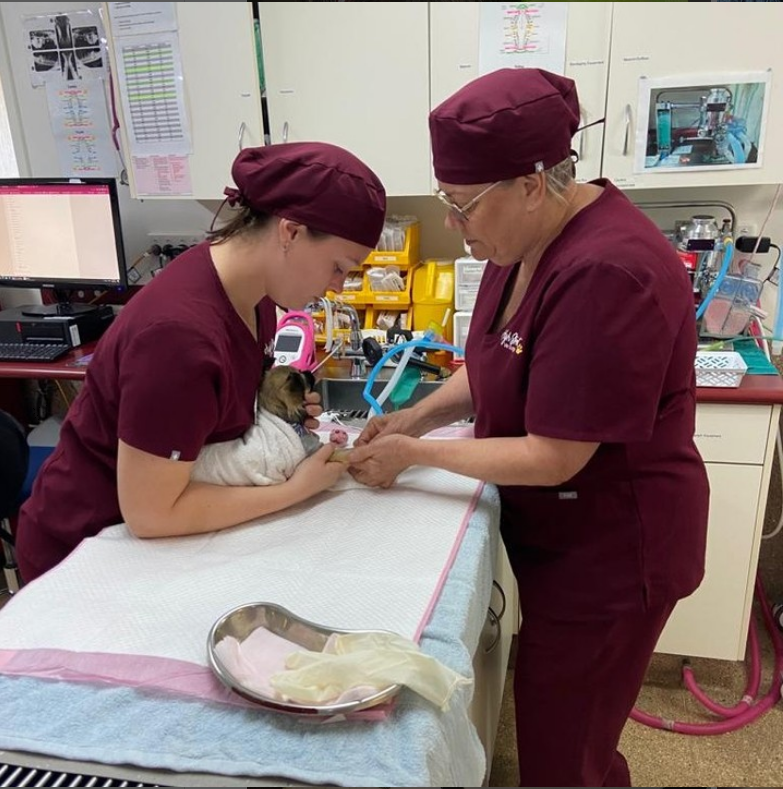How to Check If Your Dog’s Weight is Healthy
A healthy weight is essential for all dogs, regardless of breed or age. Being overweight or underweight can put your dog at risk for several health problems, including arthritis, diabetes, heart disease, and cancer.
There are several ways to check if your dog’s weight is healthy. The Body Condition Score (BCS) system is the most common way. The BCS system is a 9-point scale, with one being underweight and nine being overweight. A healthy dog will have a BCS of 5 or 6.
To check your dog’s BCS, stand over them and look down at their body. You should be able to see a waistline and a slight tuck under their abdomen. You should also be able to feel their ribs without pressing too hard. Your dog is likely overweight if you can’t see a core or feel their ribs. Your dog is likely underweight if you can see their ribs and spine.
Here is a more detailed description of each BCS score:
- BCS 1: Very underweight. The dog’s ribs, spine, and pelvic bones are prominent. There is no discernible body fat.
- BCS 2: Underweight. The dog’s ribs are easily palpable, and the spine and pelvic bones may be visible. There is minimal body fat.
- BCS 3: Moderately underweight. The dog’s ribs are palpable without excessive pressure. There is a slight tuck under the abdomen.
- BCS 4: Ideal body condition. The dog’s ribs are palpable with light pressure. There is a moderate tuck under the abdomen and an hourglass figure when viewed from above.
- BCS 5: Moderately overweight. The dog’s ribs are palpable with moderate pressure. There is a slight tuck under the abdomen and a barrel-shaped figure when viewed from above.
- BCS 6: Overweight. The dog’s ribs are palpable with firm pressure. When viewed from above, there is little to no tuck under the abdomen and a barrel-shaped figure.
- BCS 7: Moderately obese. The dog’s ribs are difficult to palpate, and there is no tuck under the abdomen. There are noticeable fat deposits around the tail, chest, and stomach.
- BCS 8: Obese. The dog’s ribs are not palpable, and there is no tuck under the abdomen. There are significant fat deposits around the body.
- BCS 9: Severely obese. The dog’s ribs are not palpable, and there is no tuck under the abdomen. There are massive fat deposits around the body, and the dog may have difficulty moving.
If you need help with your dog’s BCS, you can ask your veterinarian to help you assess it.
Using a weight chart is another way to check if your dog’s weight is healthy. Several different weight charts are available online, but choosing one specific to your dog’s breed is essential.
To use a weight chart, find your dog’s breed and age on the chart. This will give you a range of healthy weights for your dog. You should talk to your veterinarian if your dog’s weight falls outside of this range.
It is important to note that weight charts are just a general guideline. Your dog’s ideal weight may vary depending on several factors, including their body frame, activity level, and overall health.
If you are concerned about your dog’s weight, the best thing to do is to talk to your veterinarian. They can help you assess your dog’s BCS and create a weight loss or weight gain plan if necessary.
Health risks associated with being overweight or underweight
Just like humans, dogs can also be overweight or underweight. Both conditions can have serious health consequences, so it is essential to maintain your dog’s ideal weight.
Health risks of overweight dogs
Overweight dogs are at increased risk of developing several health problems, including:
Osteoarthritis
Excess weight puts extra strain on joints, which can lead to osteoarthritis. This painful condition can make it difficult for dogs to move around.
Diabetes
Overweight dogs are more likely to develop diabetes, a condition in which the body does not produce enough insulin or does not use insulin properly. Diabetes can lead to several other health problems, such as cataracts, kidney disease, and heart disease.
Heart disease
Overweight dogs are at increased risk of developing heart disease, a leading cause of death in dogs.
Respiratory problems
Overweight dogs may have difficulty breathing, especially during exercise.
Cancer
Overweight dogs are at increased risk of developing certain types of cancer, such as lymphoma and mast cell tumors.
Skin problems
Overweight dogs are more likely to develop skin problems like hot spots and dermatitis.
Health risks of underweight dogs
Underweight dogs are also at risk of developing several health problems, including:
Weakened immune system: Underweight dogs may have a weakened immune system, which makes them more susceptible to infections.
Delayed wound healing: Underweight dogs may have difficulty healing from wounds.
Loss of muscle strength and reduced mobility: Underweight dogs may lose muscle strength and mobility, making it difficult to exercise and play.
Nutritional deficiencies: Underweight dogs may suffer from nutritional deficiencies, which can affect the body in many ways, such as stunted growth and development, weakened bones, hormonal disorders, and skin conditions.
Organ failure: In severe cases, underweight dogs may develop organ failure.
How to tell if your dog is overweight or underweight
There are a few ways to know if your dog is overweight or underweight. One way is to feel your dog’s ribs. If you can’t feel the ribs at all, or they are buried under fat, your dog is overweight. If you can feel the ribs quickly, which are very prominent, your dog is underweight.
If you are unsure whether or not your dog is overweight or underweight, it is best to consult your veterinarian. They can help you assess your dog’s body condition and determine if they need to lose or gain weight.
How to maintain your dog’s ideal weight
The best way to maintain your dog’s ideal weight is to feed them a healthy diet and provide them with plenty of exercises.
Diet: Choose a high-quality dog food appropriate for your dog’s age, breed, and activity level. Avoid feeding your dog table scraps or human food, as this can lead to weight gain.
Exercise: Aim to give your dog at least 30 minutes of exercise per day. This could include walking, running, playing fetch, or swimming.
If your dog is overweight, you may need to reduce their food intake and increase their exercise levels. If your dog is underweight, you may need to increase their food intake and reduce their exercise levels. Talking to your veterinarian before changing your dog’s diet or exercise routine is essential.
Maintaining your dog’s ideal weight can help them live a long and healthy life.
Sources



